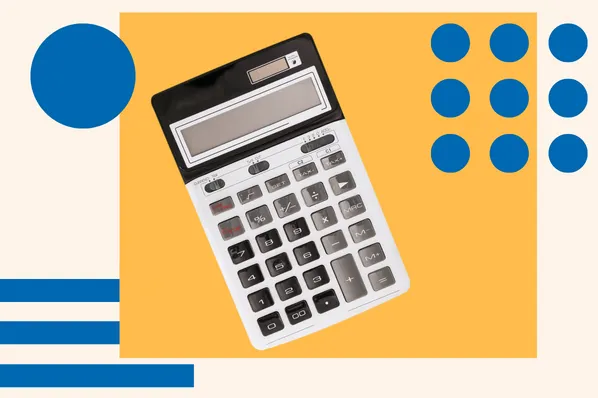Table of Contents
- Debt-to-Equity Ratio
- Why is debt-to-equity ratio important?
- Debt-to-Equity Ratio Formula
- Long-Term Debt-to-Equity Ratio
- What is a good debt-to-equity ratio?
- What is a negative debt-to-equity ratio?
- How much leverage or risk should a business take?
- Using Debt and Equity to Scale Your Business
Debt-to-Equity Ratio
The debt-to-equity ratio is a measure of a company’s financial leverage, and it represents the amount of debt and equity used to finance a company’s assets. It’s calculated by dividing a firm’s total liabilities by total shareholders’ equity.
To further clarify the ratio, let’s define debt and equity next.
What is debt?
Debt is money borrowed from a bank or private lender, with an agreement to repay the amount plus interest, typically in regular intervals. Businesses use debt to fund operating needs.
To secure a loan, a company generally requires hard assets — receivables for delivered products or services recorded on its balance sheet — to demonstrate repayment capability. New businesses or those lacking hard assets often face greater difficulty in borrowing.
What is equity?
Equity is stock or security representing an ownership interest in a company. Put simply, it’s your ownership of an asset — such as a company, property, or car — after your debt on that asset is paid.
In equity financing, a business raises capital by selling shares to investors. To learn more about funding options, I suggest reading this guide to entrepreneurship.
Debt-to-Equity Ratio Formula
Now that I have defined the debt-to-equity ratio, I’ll show you how to use it. Below is the formula to calculate the debt-to-equity ratio:
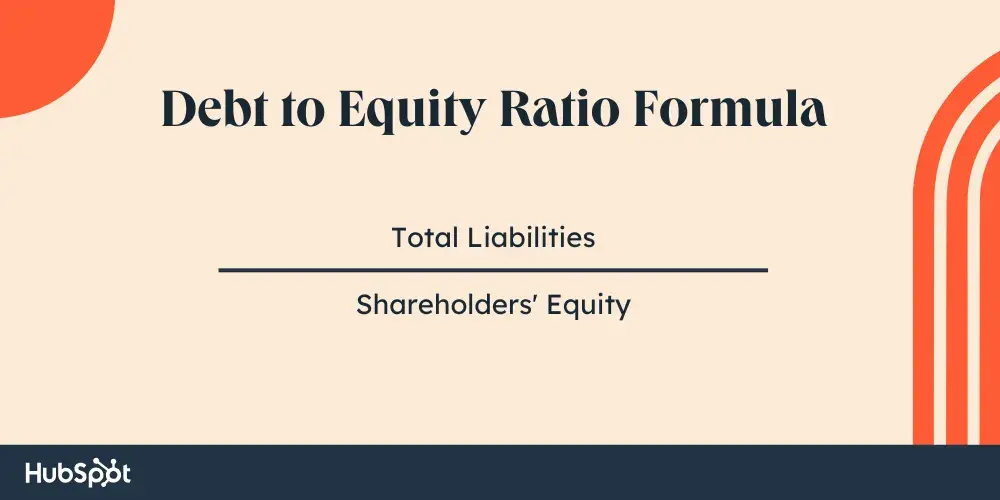
Here are the two elements that make up the formula:
- Total liabilities. Total liabilities represent all of a company’s debt, including short-term and long-term debt, and other liabilities (e.g., bond sinking funds and deferred tax liabilities).
- Shareholders’ equity. Shareholders’ equity is calculated by subtracting total liabilities from total assets. Total liabilities and total assets are found on a company’s balance sheet.
Long-Term Debt-to-Equity Ratio
The long-term debt-to-equity ratio measures how much of a company’s assets are financed through long-term financial obligations, such as loans.
As I covered above, shareholders’ equity is total assets minus total liabilities. However, this is not the same value as total assets minus total debt because the payment terms of the debt should also be taken into account when assessing the overall financial health of a company.
To calculate the long-term debt-to-equity ratio, divide long-term debt by shareholders’ equity. Short-term debt refers to liabilities due within a year, while long-term debt takes more than a year to mature.
For example, consider two companies:
- Company A — $2 million in short-term debt, $1 million in long-term debt.
- Company B — $1 million in short-term debt, $2 million in long-term debt.
Both companies have $3 million in total debt and $3.1 million in shareholder equity, resulting in an identical debt-to-equity ratio of 0.97.
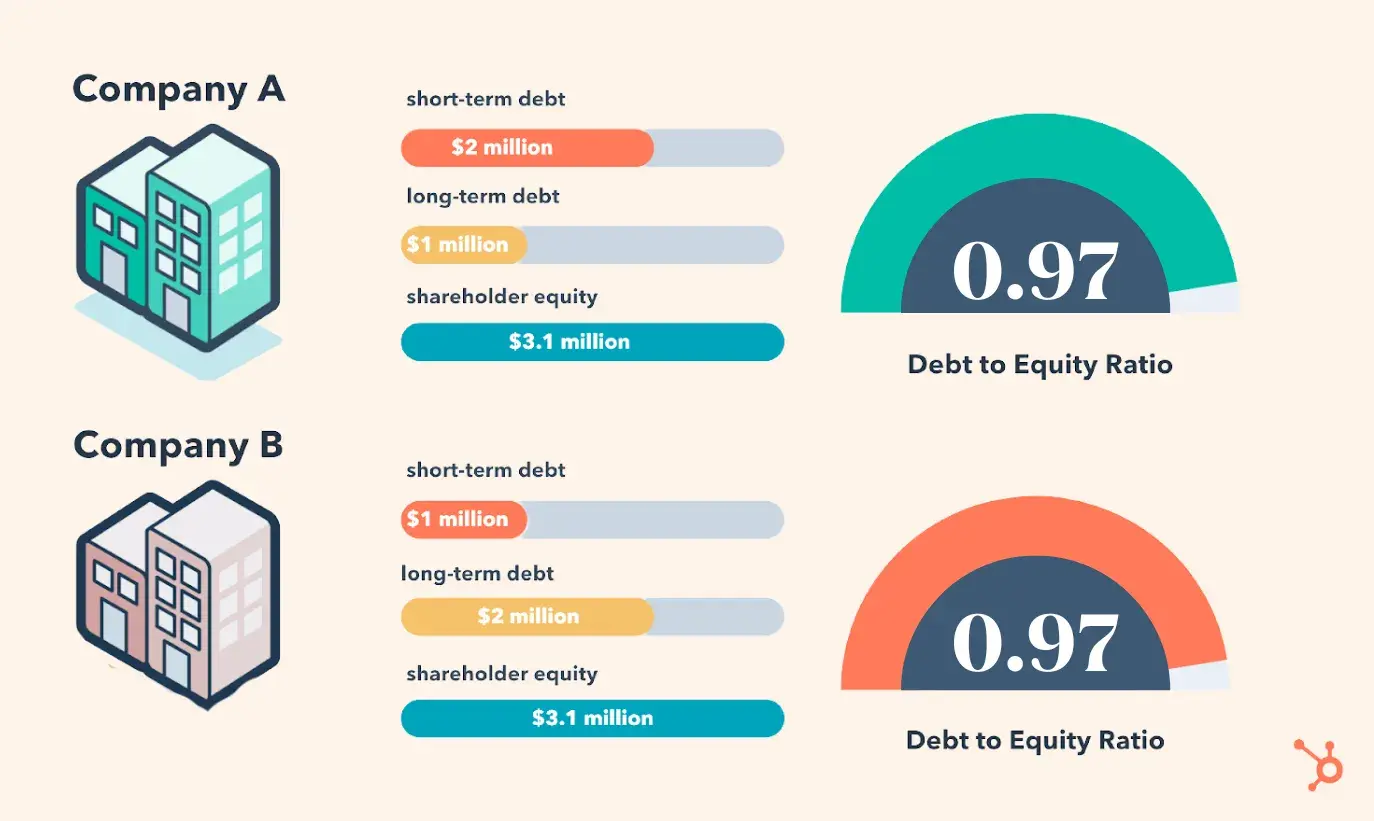
Short-term debt is riskier than long-term debt due to frequent renewals and fluctuating interest rates. Therefore, Company B, with more stable long-term debt, is considered less risky.
Here’s a quick reference for the long-term debt-to-equity ratio formula.
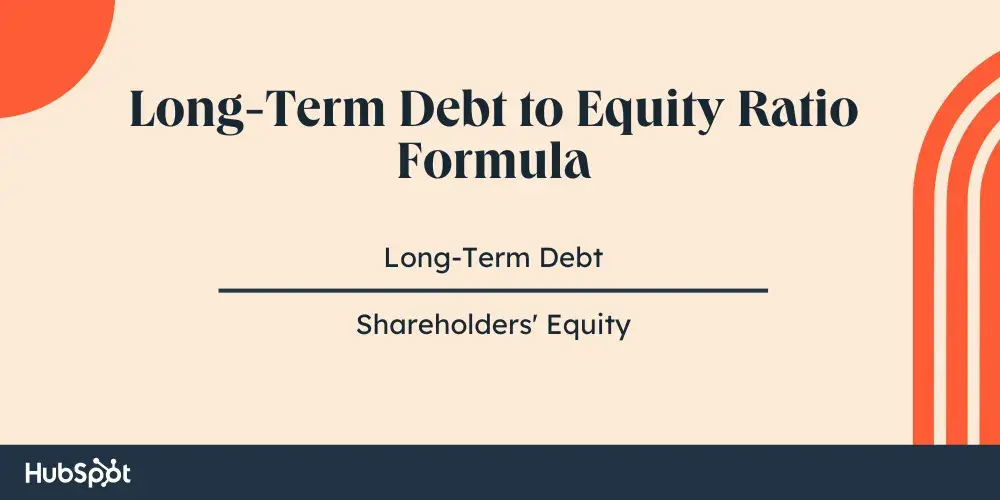
Examples of long-term debt include mortgages, bonds, and bank debt. Just like the standard debt-to-equity ratio, investing in a business is riskier if it has a high ratio.
Other Debt-to-Equity Ratio Formulas to Consider
Depending on what metrics you’d like to evaluate, you may need to use a different formula. To compare a company’s short-term liquidity, use the cash ratio:
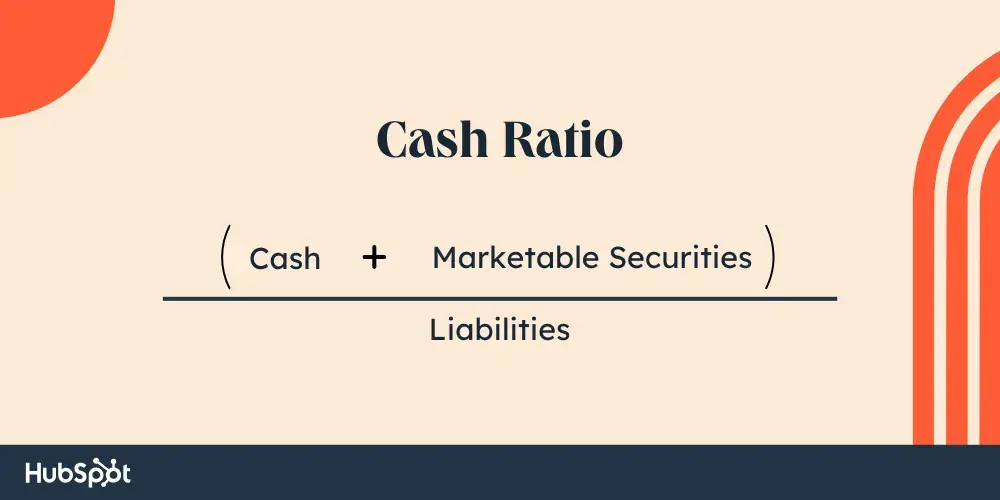
The cash ratio is used to evaluate the ability of an organization to pay its short-term obligations with cash. If the ratio comes out higher than 1, it means the organization has enough cash to cover its debts. If less than 1, the organization has more short-term debts than cash.
Additionally, you can opt to use the current ratio:
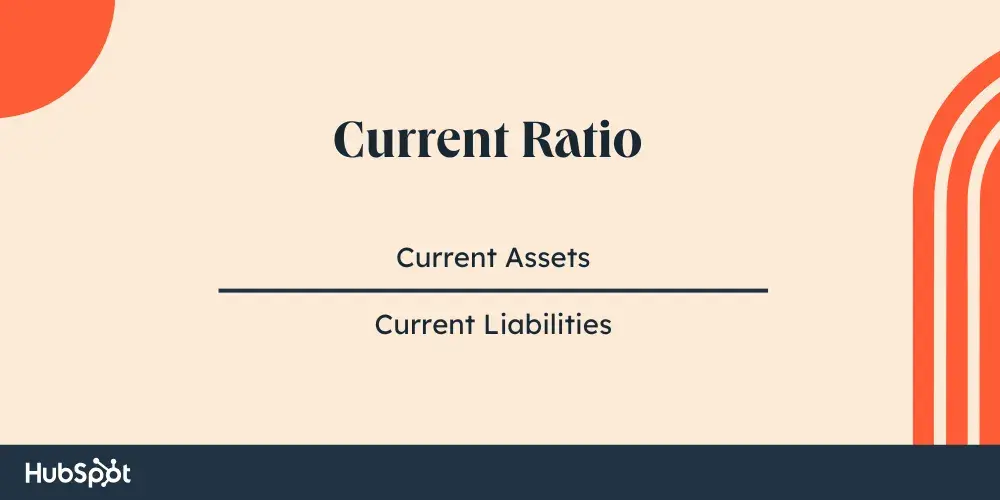
The current ratio also evaluates an organization’s short-term liquidity and compares its current assets to its current liabilities. It evaluates an organization’s ability to pay its debts and obligations within a year.
Short-term debt can include wages, payments to suppliers, or short-term notes payable. Short-term liabilities are considered less risky because they are typically paid within a year.
Debt-to-Equity Ratio Example
Let’s say a software company is applying for funding and needs to calculate its debt-to-equity ratio. Its total liabilities are $300,000 and shareholders’ equity is $250,000.
Here’s what the debt-to-equity ratio would look like for the company:
Debt-to-equity ratio = 300,000 / 250,000
Debt-to-equity ratio = 1.2
With a debt-to-equity ratio of 1.2, investing is less risky for the lenders because the business is not highly leveraged — meaning it isn’t primarily financed with debt (I talk more about leverage below).
Why is debt-to-equity ratio important?
The debt-to-equity ratio is a simple formula to show how capital has been raised to run a business. It’s considered an important financial metric because it indicates the stability of a company and its ability to raise additional capital to grow.
As an entrepreneur or small business owner, this ratio is used when applying for a loan or business line of credit. For investors, the debt-to-equity ratio is used to indicate how risky it is to invest in a company. The higher the debt-to-equity ratio, the riskier the investment.
How can you tell what your debt-to-equity ratio should be? I’ll go over that next.
What is a good debt-to-equity ratio?
A good debt-to-equity ratio is typically between 1 and 1.5, though it varies by industry (some industries use more debt financing than others). Capital-intensive sectors like finance and manufacturing often have ratios above 2.
A high ratio indicates heavy reliance on debt for growth, which can pose risks for lenders and investors if the business struggles to repay its obligations. Conversely, a low ratio suggests limited borrowing, which may signal missed opportunities for expansion and profit, potentially discouraging investors.
What should businesses with good debt-to-equity ratios do next?
Businesses with good debt-to-equity ratios — those within the standard range for their industries — likely experience balanced growth supported by both debt and equity financing.
However, a good ratio is just one snapshot of financial health. To ensure stability, focus on the long-term debt-to-equity ratio. I suggest using long-term debt, rather than short-term financing, to fund growth plans and stabilize your pecuniary picture.
What is a negative debt-to-equity ratio?
A negative debt-to-equity ratio occurs when a company’s debt generates interest costs exceeding its return on investment or when the company has a negative net worth. This signals financial instability and is often viewed as risky by analysts, lenders, and investors.
Here, I identify the common causes of a negative debt-to-equity ratio:
- Taking on additional debt to cover losses instead of issuing shareholder equity.
- Expensing intangible assets, such as trademarks, that exceed existing shareholder equity.
- Paying large dividends that surpass shareholder equity.
- Suffering financial losses after significant dividend payments.
Such scenarios can indicate financial distress to shareholders, investors, and creditors.
What would I recommend if you’re dealing with a negative debt-to-equity ratio?
A negative debt-to-equity ratio can make securing future financing difficult due to your business’s heavy reliance on debt. Avoid rushing into equity financing, as adding new shareholders could shift your company’s direction based on their terms.
Instead, focus on reducing your debt before pursuing further growth. To gauge your standing, I recommend comparing your debt-to-equity ratio with industry standards using resources like CSIMarket.
How much leverage or risk should a business take?
I’ll start by defining leverage:
Leverage refers to a business’s use of debt to finance activities and asset purchases. A company is considered highly leveraged if debt is its primary financing source, resulting in a higher debt-to-equity ratio.
I think that the amount of leverage or risk a business should take depends largely on the industry it operates in. debt-to-equity ratios vary across industries because different sectors require varying levels of debt and capital to scale.
Investors may also focus on the long-term debt-to-equity ratio to assess more significant risks. High ratios often signal higher risk for lenders and investors, so if your business relies on future loans, it’s important to analyze your debt-to-equity ratio carefully.
For example, an apparel company with significant physical assets like textiles, labor, and brick-and-mortar stores will typically have a higher debt-to-equity ratio compared to a tech company with fewer physical assets and an online sales model.
Take the U.S. business debt-to-equity ratio, which reached 82.4% in Q3 2023. This figure highlights a trend where businesses are balancing debt and equity to drive growth and also taking the right risks in an ever-evolving market.
I’m of the view that striking the right balance is essential — too much debt can cause financial strain during downturns, while relying too heavily on equity can dilute ownership and reduce shareholder returns. Companies that manage this balance effectively demonstrate strong financial planning and so are in a better position to take risks.
Using Debt and Equity to Scale Your Business
Debt often carries a negative connotation for small and growing businesses. It can actually demonstrate to investors and lenders that your business is effectively using available resources to generate a positive return on investment — provided it’s leveraged correctly.
There are various ways to raise capital, each with distinct impacts on your company’s growth and financial structure. The two most common methods are equity and debt.
I think the debt-to-equity ratio is a critical tool for entrepreneurs and investors, as it illustrates how much a business relies on debt relative to equity for financing operations and purchases. Since this ratio can vary by industry, I recommend you understand the benchmarks for your sector when financing major projects or growth strategies.
Editor's note: This post was originally published in October 2018 and has been updated for comprehensiveness.
Accounting
.png?width=112&height=112&name=Image%20Hackathon%20%E2%80%93%20Square%20(14).png)

.png)



